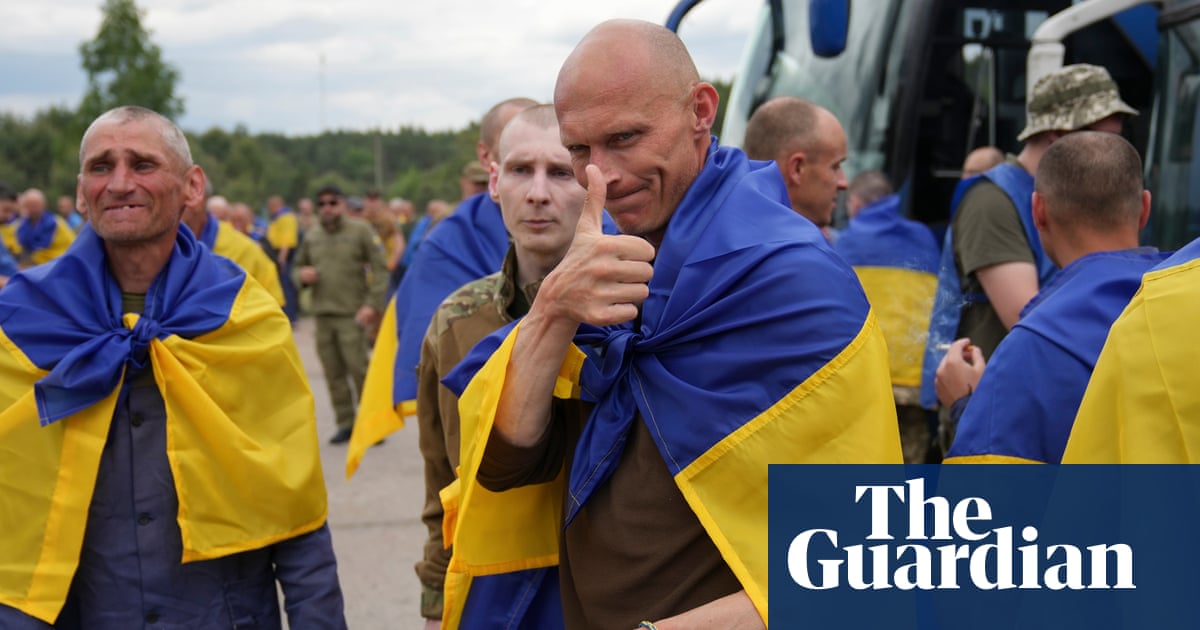The article presents a significant event in the ongoing conflict between Ukraine and Russia, highlighting a large-scale prisoner exchange. This exchange is marked as the largest yet between the two nations and occurs in a context of continued hostilities, specifically heavy Russian airstrikes on Ukrainian cities.
Context and Implications of the Exchange
The completion of a "1,000 for 1,000" prisoner swap signifies a moment of hope for families affected by the war, as it brings home not only military personnel but also civilians. President Zelenskyy's emphasis on gratitude towards those who facilitated the exchange aims to bolster morale and present a unified front. However, the simultaneous heavy airstrikes suggest a stark contrast between the hope offered by the exchange and the reality of ongoing violence, indicating that the situation remains precarious and complex.
Public Perception and Messaging
This news is likely intended to create a sense of progress and humanity amidst the destruction of war. By showcasing the emotional reunions of families, the article seeks to evoke empathy and support for the Ukrainian cause. The framing of the exchange also serves to reinforce the narrative of resilience and determination, which is crucial for maintaining public support both domestically and internationally.
Potential Omissions and Underlying Issues
While the article focuses on the successful exchange, it may downplay the severe implications of the ongoing airstrikes and the human cost associated with the conflict. This selective focus could be interpreted as an attempt to mask the grim realities faced by civilians in Ukraine, shifting attention away from the violence that continues to claim lives.
Reliability and Manipulative Aspects
The article appears reliable in terms of reporting factual events, such as the number of prisoners exchanged and the statements made by officials. However, the emotional framing and timing of the report may suggest a manipulative intent, designed to shape public opinion favorably towards Ukraine. The language used is positive and uplifting concerning the exchange, potentially overshadowing the violence that persists.
Comparative Analysis with Other Reports
When compared to other reports on the ongoing conflict, this article fits into a broader narrative of resilience against aggression. The prisoner exchange is a recurring theme in similar articles, often framed as a humanitarian effort. However, the ongoing military actions serve as a counter-narrative that is frequently glossed over in favor of more uplifting stories.
Impact on Society and Future Scenarios
The implications of this article extend beyond the immediate exchange. It could foster a sense of hope within the Ukrainian populace, potentially leading to increased support for government actions. However, the ongoing violence may lead to despair and frustration among citizens, complicating the political landscape.
Audience and Support Base
This news likely resonates more with audiences that support Ukraine’s sovereignty and humanitarian efforts. It appeals to those who are sympathetic to the plight of civilians and military personnel affected by the war, promoting solidarity and national pride.
Economic and Global Market Effects
The article may influence market sentiments related to defense and humanitarian sectors. Stocks related to military supplies and humanitarian aid organizations could experience fluctuations based on public perception of the conflict's trajectory.
Geopolitical Significance
In the context of global power dynamics, this prisoner exchange reflects the ongoing struggle between Russia and Ukraine, a situation that has broader implications for European security and international relations. The article is timely, given the current global focus on the conflict and its ramifications.
Use of AI in Reporting
While it's unclear if AI was used in composing this article, the structure and language suggest a human touch aimed at enhancing emotional engagement. If AI were utilized, it might have influenced the presentation of facts to generate a more narrative-driven account that emphasizes hope and resilience.
In summary, while the article discusses a significant event, it also serves multiple purposes, including shaping public perception and maintaining morale. The emotional framing could indicate a level of manipulation, aimed at garnering support amidst ongoing violence. The reliability of the information is intact, but the narrative could overshadow critical aspects of the situation.
